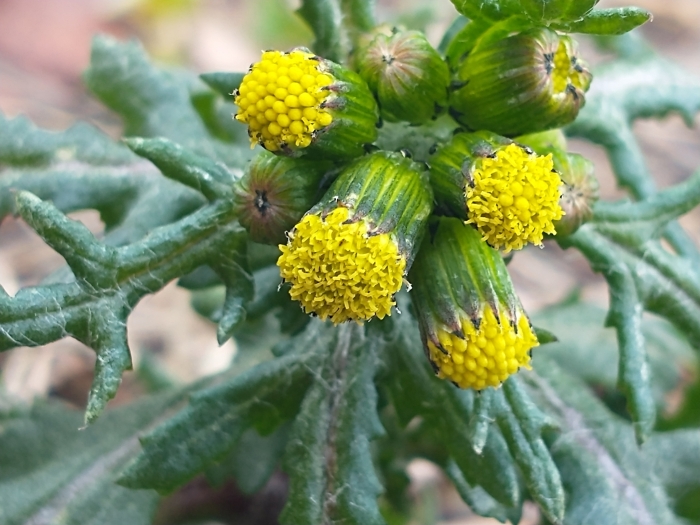Groundsel
(Senecio vulgaris)
Groundsel (Senecio vulgaris)
/
/

Tom Norton
CC BY 4.0
Image By:
Tom Norton
Recorded By:
Copyright:
CC BY 4.0
Copyright Notice:
Photo by: Tom Norton | License Type: CC BY 4.0 | License URL: http://creativecommons.org/licenses/by/4.0/ | Rights Holder: Tom Norton | Publisher: iNaturalist | Date Created: 2023-12-31T12:03:44-08:00 |











Estimated Native Range
Summary
Senecio vulgaris, commonly known as groundsel or old-man-in-the-spring, is a frost-resistant annual herb that originates from a variety of habitats including open fields, waste areas, and roadsides throughout Europe, northern Asia, and parts of North Africa, and has become widely naturalized in many other regions. It typically grows to a height of up to 16 inches (40 cm) and features a rosette of lobed leaves with clusters of small, inconspicuous yellow flowers that lack ray florets and bloom nearly year-round in mild climates. The flowers are not particularly showy, but they produce a large number of seeds that contribute to its rapid spread and potential invasiveness.
Groundsel is known for its hardiness and ability to colonize disturbed sites quickly, making it a common weed in gardens, agricultural lands, and urban areas. It can grow at altitudes up to 1640 feet (500 meters) and prefers full sun to partial shade. It is adaptable to a wide range of soil types but thrives in moist, well-drained soils. While not typically cultivated for ornamental purposes, groundsel can be useful for filling in bare spots in a garden or for green manure if managed properly. However, it is important to control its spread to prevent it from becoming invasive. Groundsel can host pests and diseases such as aphids and powdery mildew, which can affect other plants in the garden.CC BY-SA 4.0
Groundsel is known for its hardiness and ability to colonize disturbed sites quickly, making it a common weed in gardens, agricultural lands, and urban areas. It can grow at altitudes up to 1640 feet (500 meters) and prefers full sun to partial shade. It is adaptable to a wide range of soil types but thrives in moist, well-drained soils. While not typically cultivated for ornamental purposes, groundsel can be useful for filling in bare spots in a garden or for green manure if managed properly. However, it is important to control its spread to prevent it from becoming invasive. Groundsel can host pests and diseases such as aphids and powdery mildew, which can affect other plants in the garden.CC BY-SA 4.0
Plant Description
- Plant Type: Herb
- Height: 0.3-2 feet
- Width: 0.3-1 feet
- Growth Rate: Rapid
- Flower Color: Yellow
- Flowering Season: Spring
- Leaf Retention: Deciduous
Growth Requirements
- Sun: Full Sun, Part Shade
- Water: Medium
- Drainage: Fast, Medium, Slow
Common Uses
Bee Garden, Bird Garden, Butterfly Garden, Low Maintenance
Natural Habitat
Originates from a variety of habitats including open fields, waste areas, and roadsides
Other Names
Common Names: Groundsel, Common groundsel, Old-man-in-the-spring
Scientific Names: , Senecio vulgaris, Erigeron senecio, Senecio lanuginosus, Senecio vulgaris var. vulgaris,
GBIF Accepted Name: